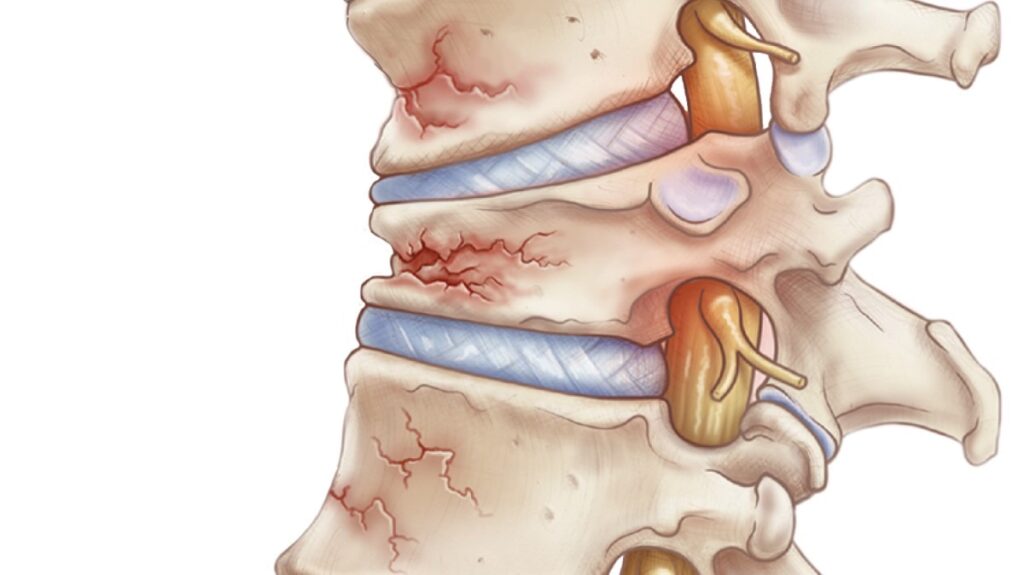
What is a Vertebral Compression Fracture?
The spine is made up of many individual bones called vertebrae that stack together in a column. Just like other bones in the body, these vertebrae can fracture. A vertebral compression fracture is an injury that occurs when the main part of the vertebra, the body, experieneces too much pressure and collapses . These fractures can happen in the thoracic (upper back) and lumbar (lower back) regions of the spine.

How are Compression fractures treated?
Left to their own, vertebral compression fractures may heal on their own with conservative treatment and pain control. This may take up to serveral months. Vertebraoplasty can speed up recovery time by stabilizing the fracture fragments. This can reduce pain allowing patients to return sooner to their normal activities.
Vertebralplasty works best on fractures that are less than 4 weeks old. A physical examination as well as additional imaging may be needed to tell if someone is a good candidate for vertebroplasty. Typically, our doctors recommed a MRI to look at the bones to tell if the procedure is technically possible and to see if there is active inflammation. (edema). The ideal vertebroplasty patient is someone who is not improving with conservative therapy who has active inflammation on MRI.
How does Vertebralplasty Work?
Using a real time x-ray (fluoroscopy), a needle is carefully passed into the vertebral body. Depending on the fracture, one or two needles may be used. Once the needles are in the correct position, cement is slowly injected. When the fracture has been filled. The needles are removed. For one fracture, the procedure usually takes less than one hour. If a patient has multiple fractures, these can usually be treated during the same session.
